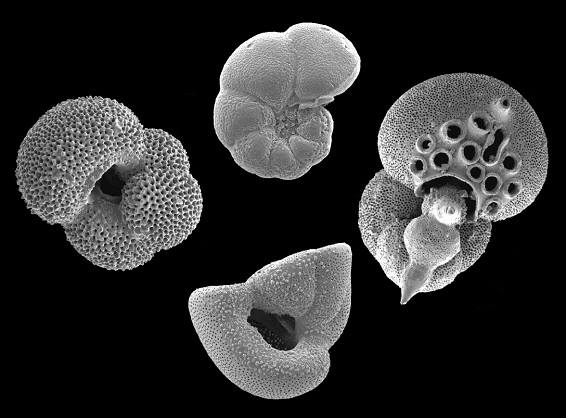Descent into the Icehouse
Throughout Earth’s history there have been major reorganisations of the whole Earth system. It is known that the drivers of the changes, and the controls on the intervening periods of relative stability, involve complex feedbacks on a variety of time and space scales between global tectonic cycles, biogeochemistry and evolution which together regulate atmospheric, terrestrial and oceanic conditions.
The “Descent into the Icehouse” project is part of the NERC directed research programme, “Long-term Co-evolution of Life and the Planet”, and addresses the transition of Earth’s climate from “greenhouse” warmth to “icehouse” glaciation during the early Cenozoic era, specifically from around 50 to 34 million year ago.
Due to the nature of the rock record, this most recent transition is the best studied and most well documented of the greenhouse to icehouse switches, but nonetheless the processes responsible are still much debated. The most popular hypothesis is that it was caused by a decline in the atmospheric CO2 – an important greenhouse gas. Although it has been recently confirmed that the final rapid switch at the Eocene/Oligocene boundary was associated with a dramatic decline in CO2, it has also been suggested that CO2 was not the main driver of the overall transition.
A number of potential candidates fall broadly into two camps – either this climate transition was driven purely by processes internal to the Earth (such as mountain uplift, ocean circulation via changes in ocean gateways, or volcanic outgassing of CO2) or it involved some, or all, aspects of the Earth surface, including biology, that can serve to cause and amplify change in a number of important ways. By burning fossil fuels, CO2 concentrations may reach values typical of the greenhouse world of the Eocene by the end of this century. It is therefore becoming imperative to better understand the role of CO2 in driving these natural cycles of Earth’s climate, and consequently, the principal aim of this project is to determine the main driver of this most recent and dramatic switch in climate state.
In order to achieve this we use a multidisciplinary approach that has aspects of both new data collection and computer modelling. We study the fossil remains of sea-dwelling microscopic organisms, the foraminifers and coccolithophorids. These organisms are very abundant in the mud on the floor of the oceans, providing an invaluable archive of past ocean climate data, and by looking at the chemical composition of their shells or the organic compounds they biosynthesise we can determine how warm or how acidic the ocean was.
From such parameters, we can also deduce how much CO2 was in their environment. Armed with this improved understanding of how the climate system evolved leading up to the greenhouse-icehouse transition we can better investigate the natural processes that caused the change. Given the complex nature of the climate system this is best done with a variety of sophisticated computer modelling approaches. Crucially, it is only by guiding these computer simulations with the new data we have generated that we can isolate which of the myriad of potential processes was responsible for triggering this fundamental shift in climate and better determine how they impacted the evolution of life.
Links
Follow us on Twitter
Recent Posts
- In the News : What a three-million year fossil record tells us about climate sensitivity
- Past evidence confirms recent IPCC estimates of climate sensitivity
- Crucial new information about how the ice ages came about : PR & Podcast
- 2014 Sino-UK Coevolution of Life and the Planet Summer School
- Past and Future CO2 – Reconstructing atmospheric Carbon Dioxide





